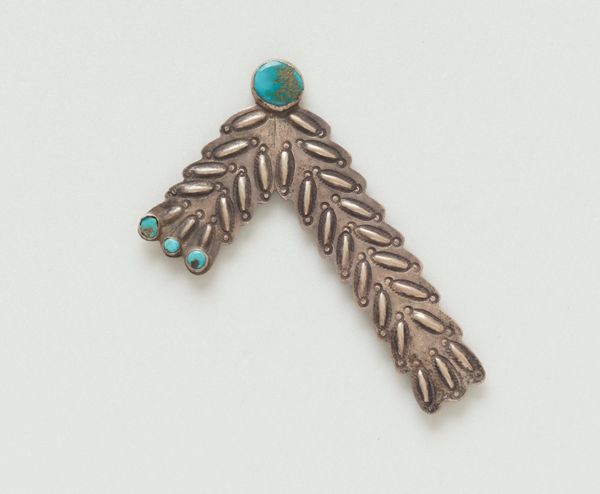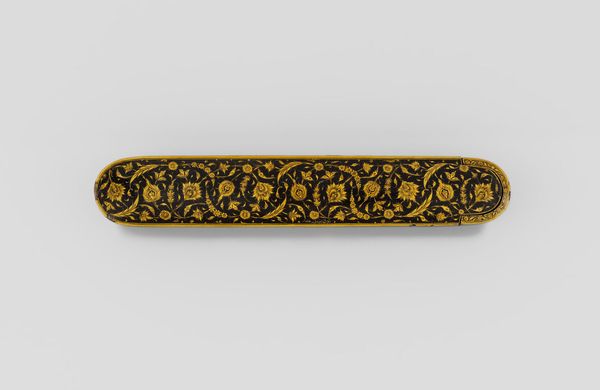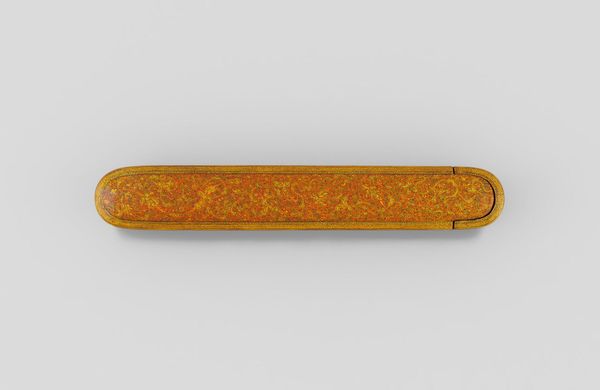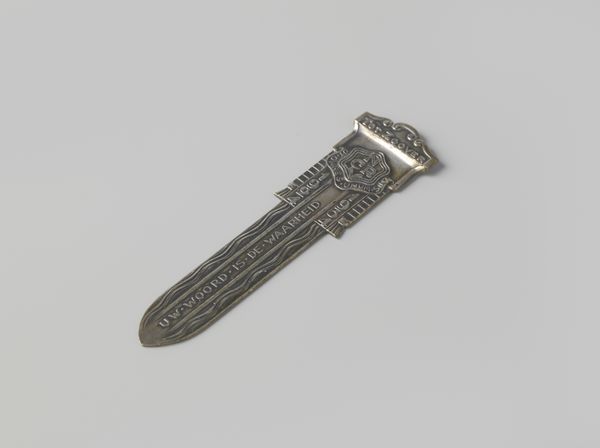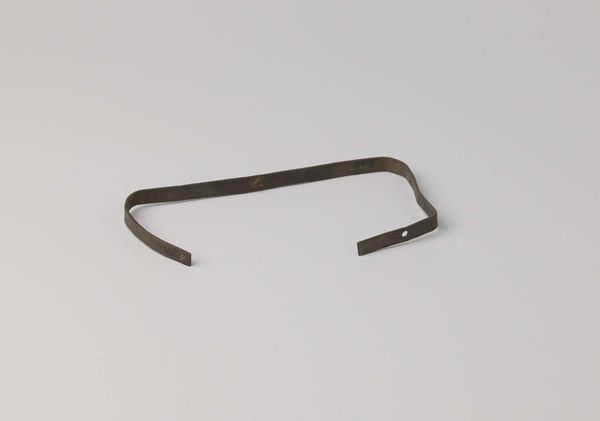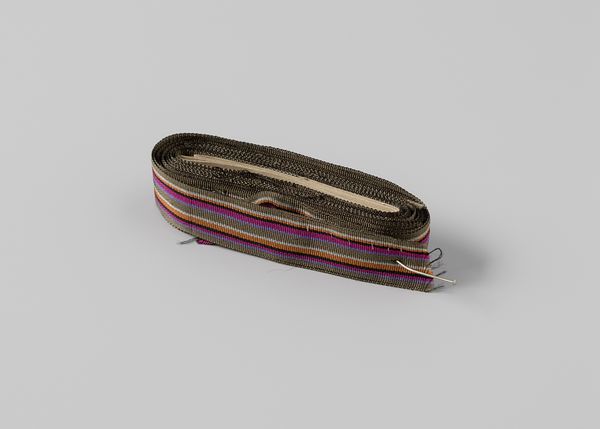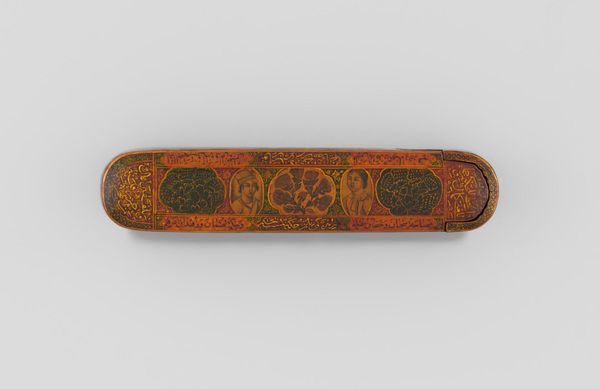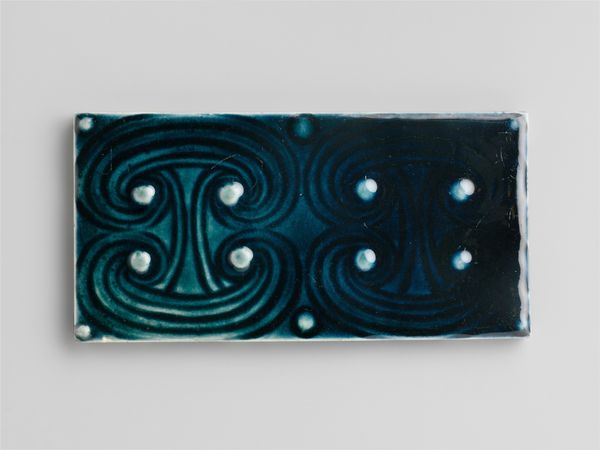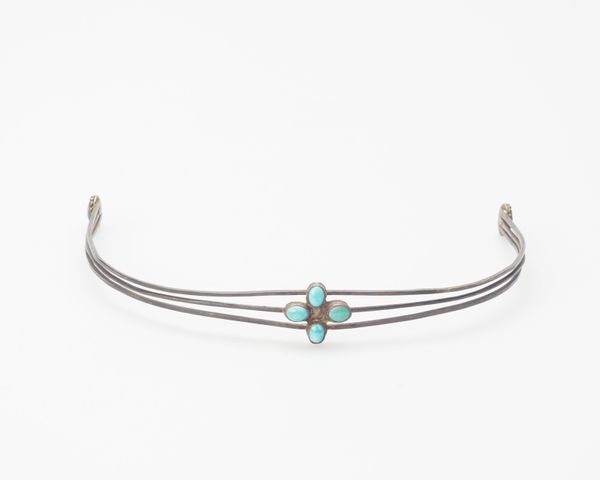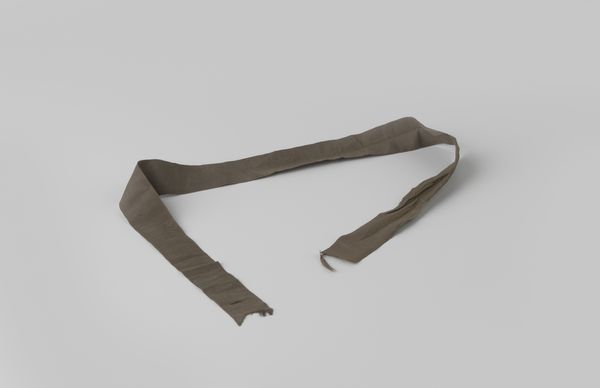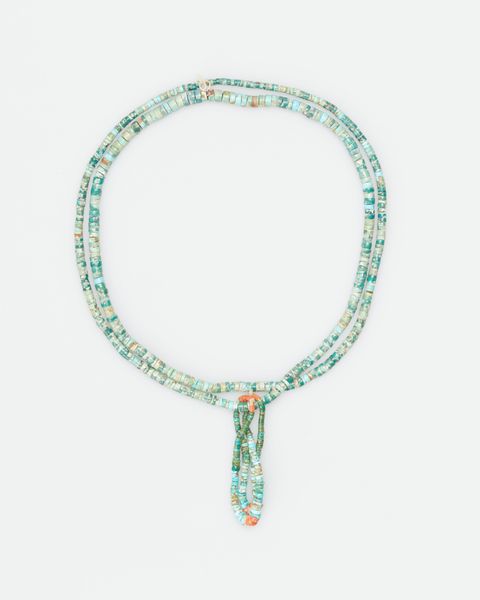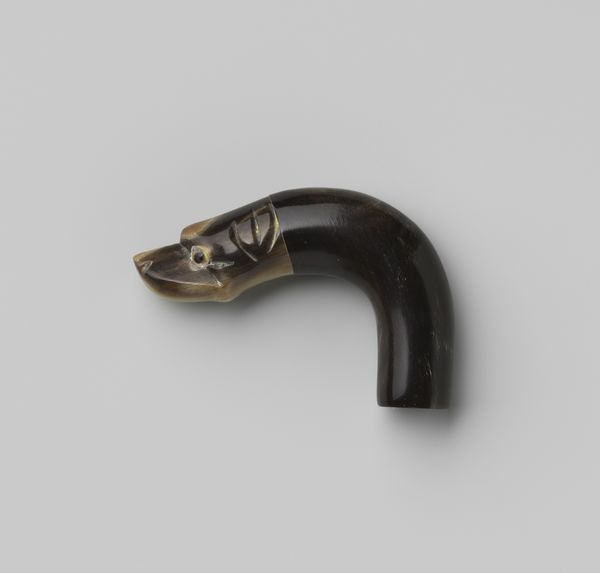
silver
#
silver
#
geometric
#
decorative-art
#
indigenous-americas
Copyright: Public Domain
Curator: Here we have a beautiful pair of collar points made by a Navajo artist, sometime in the 1930s. The material is silver, adorned with geometric settings. Editor: I find them immediately striking—clean, sharp lines meet the earthy, almost playful turquoise. There's something both grounded and elevated here. Curator: Exactly. These points reflect a fascinating moment when indigenous artistry engaged with broader stylistic currents, like Art Deco’s love for geometric forms. Think about the labor involved. This artist wasn’t just shaping silver, they were engaging in a complex negotiation—adapting tradition while catering to, or perhaps even critiquing, the dominant culture. Editor: I agree, and it speaks to the agency of Indigenous artisans who were actively participating in shaping their own narratives. These weren't just passive reproductions; they were assertions of cultural identity during a time of immense social and political pressure. Were these specifically created for a Native market or the Anglo tourist trade? The answer surely influences how we perceive the object. Curator: Context matters, absolutely. We need to consider the economic pressures and systems of exchange at play. The rise of trading posts, the availability of silver—often sourced from melted-down coins—all impacted the process and therefore, the object itself. How did the accessibility of new materials shape the aesthetics and techniques employed? Editor: It is fascinating to contemplate. Moreover, turquoise itself is not simply an aesthetic choice; it carries deep spiritual significance for many Indigenous peoples. The deliberate placement, the choice of varying shapes—oval next to round—may imbue it with layers of symbolic meaning. And what of the wearer? How would this piece be read in various social settings, both Indigenous and non-Indigenous? Curator: Thinking about this kind of object always takes me back to the hands that shaped it, the skill involved in working the silver, and how all these layers become enmeshed in the final product. It's never *just* about the visual impact, is it? It's always a confluence of material conditions and human ingenuity. Editor: I couldn't agree more. Every facet—the color, the geometry, the material—resonates with echoes of resistance, resilience, and enduring cultural expression. A reminder of how art can function as a quiet but powerful act of self-definition.
Comments
No comments
Be the first to comment and join the conversation on the ultimate creative platform.

